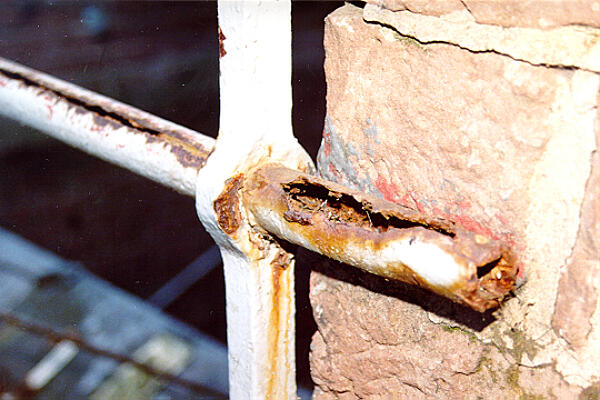Types of Corrosion
There are several types of corrosion and the science and understanding of these processes are constantly evolving. Here is a brief overview of some common types of corrosion:

- Galvanic corrosion is the most common and impactful form of corrosion. It occurs when two dissimilar (different) metals are in contact in the presence of an electrolyte. In a galvanic cell (bimetallic couple), the more active metal (anode) corrodes and the more noble metal (cathode) is protected. There are a number of factors that affect the galvanic corrosion including types of metals, relative size of anode, and environment (temperature, humidity, salinity, etc.)
- Pitting Corrosion occurs under certain conditions, which leads to accelerated corrosion in certain areas rather than uniform corrosion throughout the piece. Such conditions include low concentrations of oxygen or high concentrations of chlorides (anions) that interfere with the alloys ability to reform a passivating film. In the worst cases, most of the surface remains protected, but tiny fluctuations degrade the film in a few critical areas. Corrosion at these points is amplified and can cause pits.
- Microbial corrosion, commonly referred to as microbiologically influenced corrosion (MIC) is caused by microorganisms. It applies to both metallic and non-metallic materials with or without oxygen. When oxygen is absent, sulfate-reducing bacteria are active and produce hydrogen sulfide causing sulfide stress cracking. When oxygen is present, some bacteria may directly oxidize iron to iron oxides and hydroxides. Concentration cells can form in the deposits of corrosion products, leading to localized corrosion.
- High-temperature corrosion, as its name suggest, is deterioration of a metal due to heating. This can occur when a metal is subjected to a hot atmosphere in the presence of oxygen, sulfur, or other compound capable of oxidizing the material.
- Crevice corrosion occurs in confined spaces where access of fluid from the environment is limited such as gaps and contact areas between parts, under gaskets or seals, inside cracks and seams and spaces filled with deposits.
